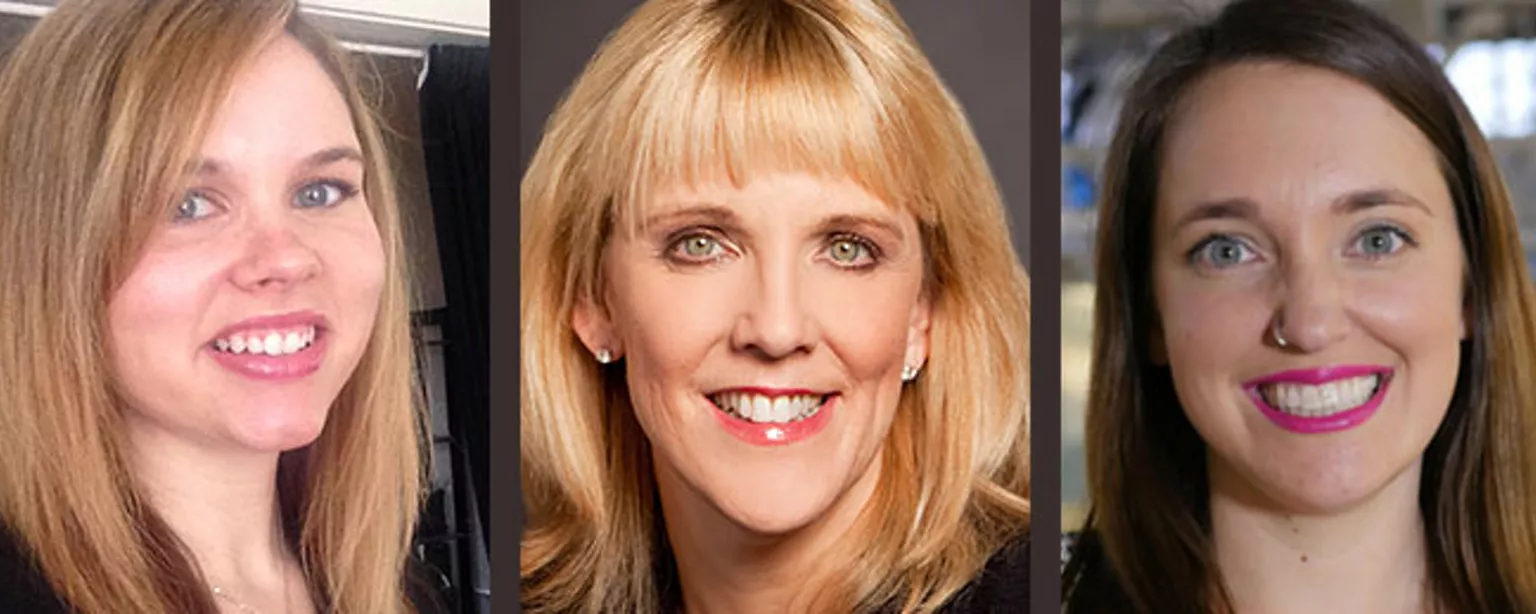Does all of the discussion about the gender gap in technology actually create more challenges for women trying to make their mark in the field?
We posed this question to three women in technology and also asked them to offer their insights on how companies can increase diversity in their workforce and create more inclusion. Here are their answers:
Sheila Jordan, Chief Information Officer, Symantec Corp.
Talking about the gender gap in technology helps to build awareness about the issue – and that’s fantastic. But I think companies need to make sure they focus first and foremost on recruiting the best people, and not just trying to hire someone from a specific demographic group because the numbers suggest that group is underrepresented in their workforce. No professional wants to be an obligatory checkmark.
The pipeline is where I think the real gap is. Not enough girls are choosing to pursue careers in technology. Addressing that gap starts with STEM (science, technology, engineering, mathematics). Symantec is very active with a number of STEM groups in Silicon Valley — Girls Who Code is one example. We’re working with these groups to provide mentorship and role models, and to help showcase the art of the possible for girls who are interested in technology.
There is a huge opportunity to increase that pipeline. And once that happens, employers will have a bigger and more diverse pool of qualified talent to hire from generally. That will help to close the gender gap in the technology workforce over time.
Creating an environment where women can flourish
That said, companies still need to create an environment where women can flourish. In fact, I believe it is the responsibility of any company and its leadership to create an environment where all diverse thinking is heard, valued and encouraged. This goes way beyond gender. People need to be in an environment where they are comfortable and supported, and feel like they are a vital part of a bigger group working toward a common purpose.
This is where technology companies — those at the forefront of innovation — really have an advantage. These are the places where technologists want to build their resume and skills, and apply what they’ve learned in school or in their careers. So, if you want to recruit the best talent, period, remember that it’s all about the work. You need to create the vision.

To my point about tech companies needing an environment where women can flourish, I would caution female candidates, as well, to make sure they apply for positions at organizations where they are most likely to thrive. If you’re in a job where you love the work and you’re doing really well, but you feel like people in the company are trying to change you, you might not be in the right environment. I’m not talking about feedback or coaching — these things are very important because they make you better and stronger. I mean situations where you feel pressure to radically change who you are.
I’ve been fortunate that I’ve had employers throughout my career that have allowed me to do my job and not lose my identity. When I walk through the doors of Symantec every morning, I am the CIO. I have a big job and a lot of responsibility. But I am also still Sheila. I’m a girl, and I like to wear high-heeled shoes, lipstick and jewelry. I’m not going to change — and I’m not expected to.
Aubrey Blanche, Global Head of Diversity and Inclusion, Atlassian
Talking about the gender gap in technology can’t make the problem worse when you consider that not talking about it before didn’t make it better. I do think discussing the issue is a step in the right direction, and we’re seeing many technology companies experimenting with solutions meant to address the gap and promote more diversity in the workplace. But I also think we’re just at the beginning of the journey toward making real change.
At Atlassian, we’re taking an intersectional approach to the way we think about diversity. We call it “n-Space.” The name is inspired by the non-deterministic Turing machine. In short, in the non-determinant space or n-Space, one input can have more than one valid output. So, the n-Space concept at Atlassian is that everyone has something unique about them that they bring to the company, or to their team, and we should celebrate and recognize that.
Women are obviously a big focus in our diversity program, but we also try to think about the subgroups some of us occupy as well. An example would be women who are of a certain ethnicity and bring with them a particular background. Placing value on someone’s unique mix of personal qualities and experiences versus just categorizing them into a larger demographic group helps us to see that person as a whole person. It also aids in building empathy, which is essential to creating more diverse and inclusive teams and workplaces.
Building connections to build empathy
It’s important for companies to create opportunities for people to see connections between themselves and others because that leads to empathy. When people have an authentic and empathetic reaction to another person, it is more likely that they will be motivated to create an inclusive environment for that person.
One way we try to promote empathy in our teams is through storytelling. We provide virtual spaces where people can share their stories and perspectives, and discuss how their identities influence their experience at work and their careers. This approach has been really well-received.

For example, one of our employees recently blogged about her experience returning from maternity leave — what it was like for her emotionally and the challenges she faced coming back to work. We saw this immediate outpouring of empathy from other women at Atlassian. Many said, “I thought I was the only who felt that way!” More than that, we had many male employees who were equally supportive and said things like, “I didn’t realize this transition was so challenging. Now I know how to better support my colleagues when they return from leave.”
So back to the original question, I think talking about the gender gap is an important step toward building real solutions that can lead to positive change. Look at it from a product perspective: We don’t generally solve engineering problems by ignoring them. We identify the gaps. We identify the utilities that can improve our users’ experience, and we make a plan to build those features. I think we need to take a similar tack when talking about women in the workplace and trying to effectively recruit any person from a traditionally underrepresented background.
Stephanie Shupe, Senior Software Engineer, Lookout, and Advisor to Women Who Code
Awareness is key in addressing the gender gap in technology. I think people generally agree there is a gender gap in the industry, and a diversity problem as well. But companies need to have specific goals around both issues if they want to make change in their organization.
It’s about more than just looking at the overall composition of your workforce, though. You need to think about why diversity is important for the business, and whether you have the right people working on certain projects. Whatever audience you sell to or want to connect with, you need people on your product team who understand those audiences and can make sure you’re developing a product that will meet their needs. If you don’t have those people engaged at the product level, then you’re missing the chance to grow your business.
Companies also need to help their employees recognize and overcome unconscious bias — the prejudices that influence how we interact with others but often don’t realize we have. Unconscious bias interferes with your ability to accept someone else without preconditions. You can’t fully remove these biases, but being aware of them can help you to prevent them from interfering with your ability to collaborate or influencing your hiring.

I am on our diversity panel at Lookout. One way our company is working to keep unconscious bias in check when recruiting talent is by using a hiring panel composed of about six to eight people. We try to assemble a group of employees who are not only demographically diverse, but who can bring different qualities and perspectives to the hiring process. The whole panel needs to agree on a hire. If someone does not agree with a decision, the group needs to analyze the situation and ensure there is a legitimate issue and not a case of unconscious bias.
Addressing two significant issues
These are just examples of small steps that can help to close the gender gap and increase diversity in our industry. There are two bigger issues that need to be addressed, however, before I think you’ll see real change.
One is that we need to keep girls engaged in STEM. Too many drop off the STEM track in middle school or high school — even in college. If they don’t finish their learning in STEM, it’s hard to get them to the point where we can hire them. So, there is definitely a pipeline issue.
There is also a retention problem. Many women leave the workforce to have a child, or to stay at home while their children are very young, and then, given the very rapid change that occurs in the IT industry, they struggle to come back. Companies really need to do a better job of supporting women when they make a major life choice.
I do think we are starting to see change, though. One thing that keeps me positive is how much the Women Who Code community has grown — and how it keeps expanding. It shows me that while there may be few women working in engineering or other technology roles within individual companies, together, we are a huge contingent.






